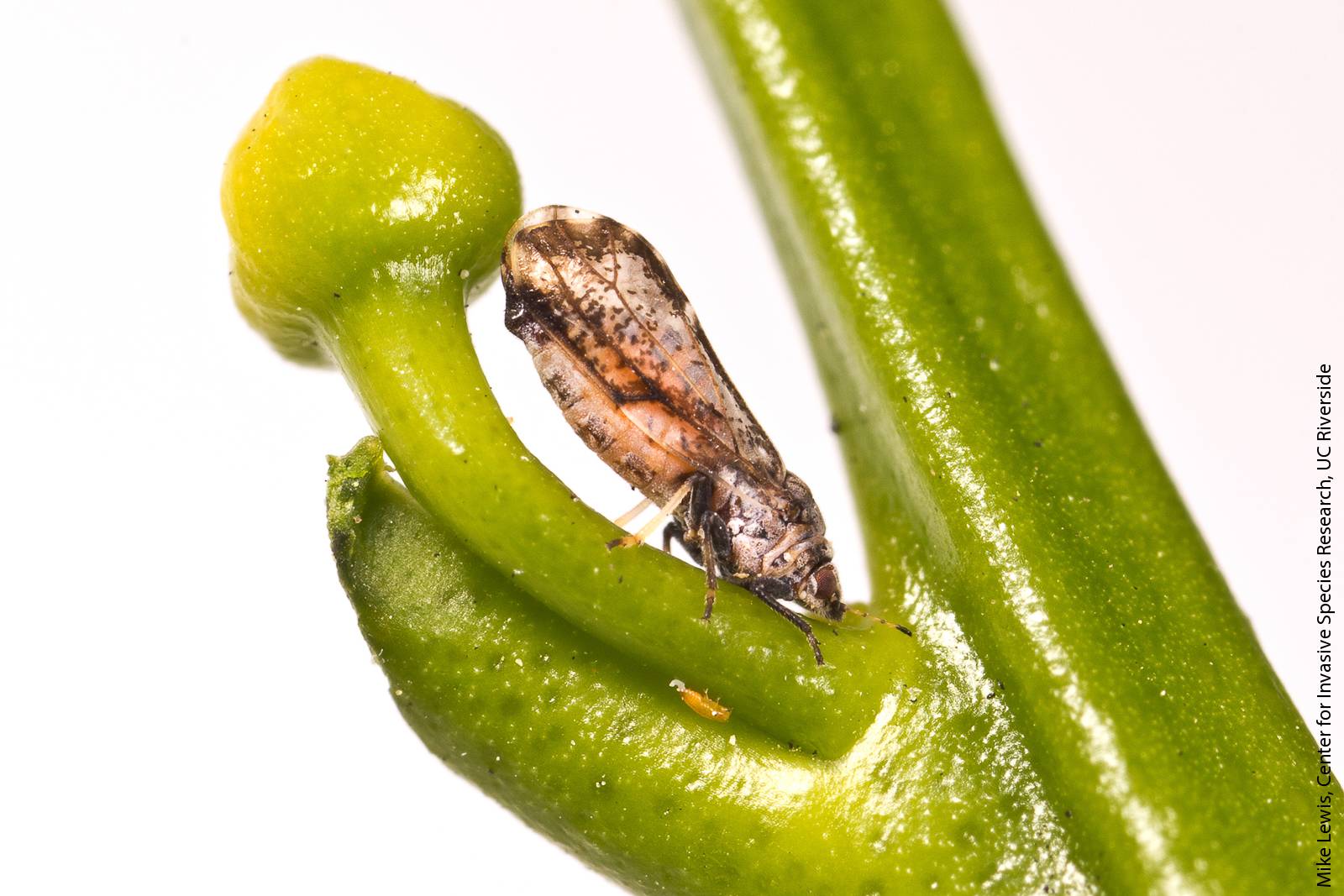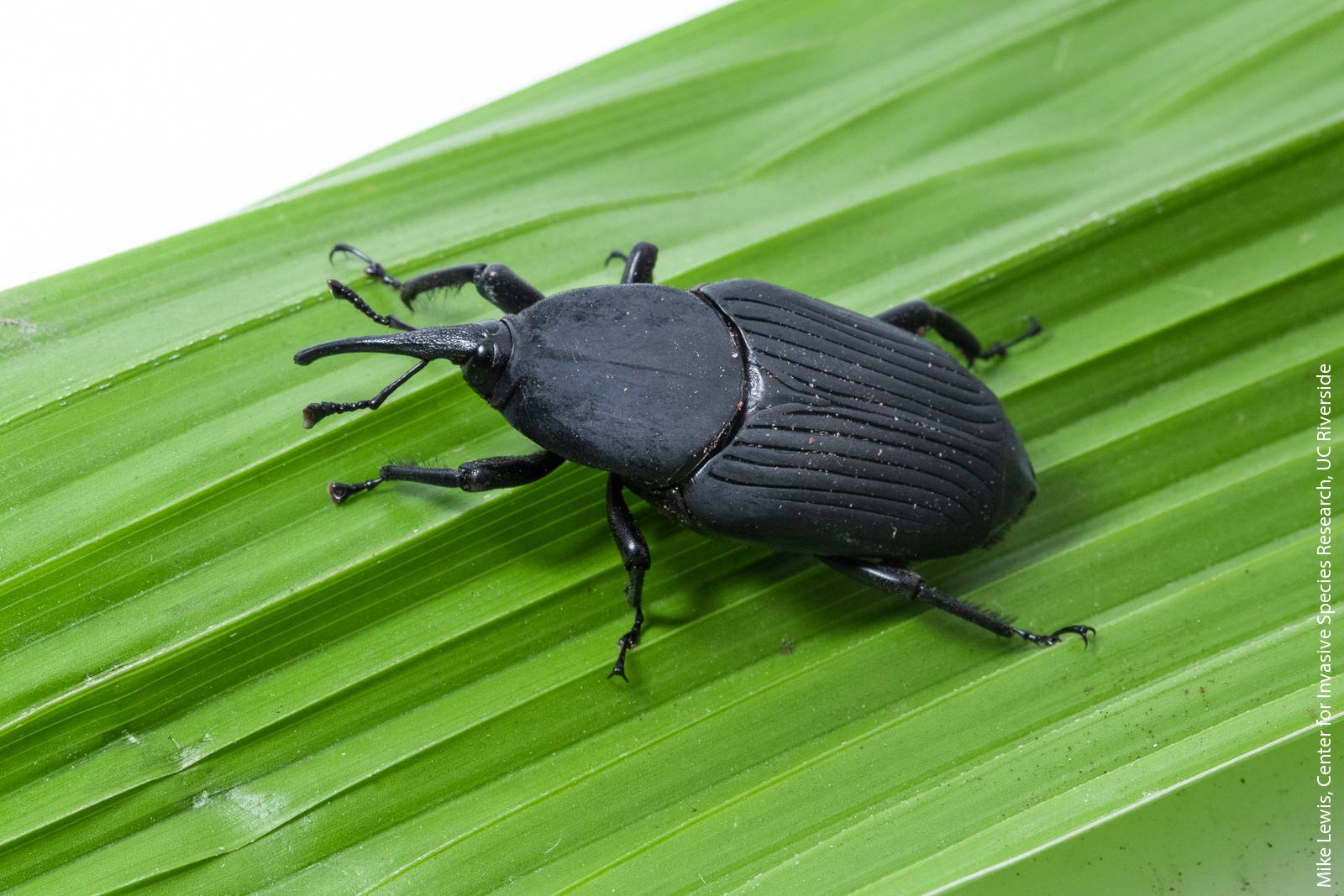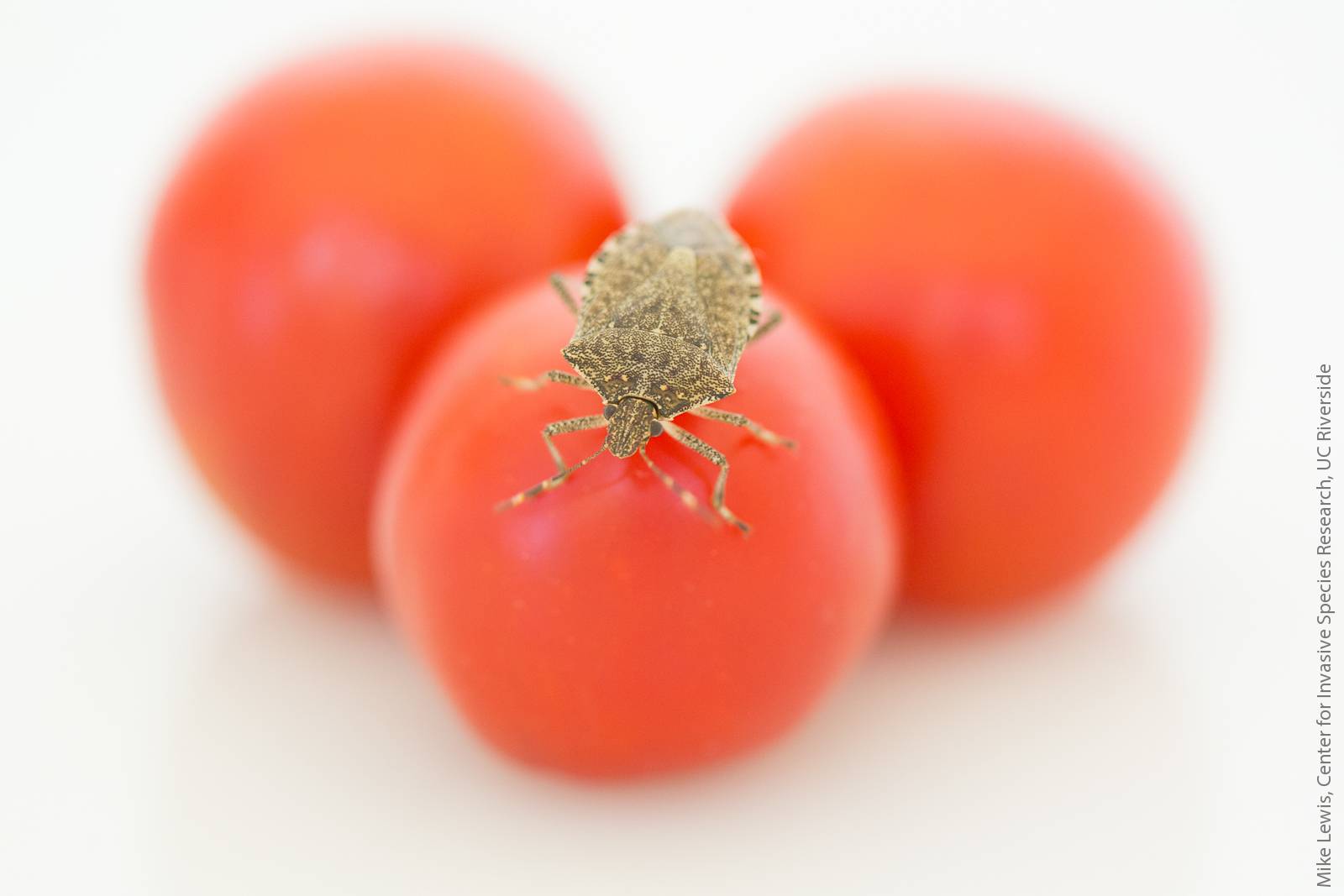All Issues
Proactive biological control: A cost-effective management option for invasive pests
Publication Information
California Agriculture 72(3):148-150. https://doi.org/10.3733/ca.2018a0027
Published online August 08, 2018
PDF | Citation | Permissions
Summary
Proactive biocontrol could accelerate responses to invasive pests in urban areas — where pesticide use may be unpopular — before they spread to agricultural areas.
Full text
Invasive pests regularly threaten California agriculture as well as the state’s diverse urban and wilderness areas. Approximately nine nonnative species of invertebrates (i.e., insects, mites, spiders, etc.) establish in the state each year, of which about three become pests (Dowell et al. 2016). These invasive species move globally through trade and tourism. Biological control programs are typically implemented as part of an integrated pest management (IPM) approach for some invasive species infestations in California. However, a proactive approach would be to screen a pest’s natural enemies and approve them for release ahead of time, before the pest establishes in California. Such a project is just getting underway.
California’s agricultural enterprises are vast (valued at $46 billion in 2015), and the state is a world leader in the development of science-based pest management solutions. Biological control and IPM originated here. IPM is a comprehensive approach to managing pests and combines plant and pest management practices, of which biological control is one, to reduce pest pressure, crop damage and pesticide use. Biological control is the intentional use of a pest’s natural enemies for suppressing population densities to less damaging levels. When a nonnative species is introduced into a new area, its population may grow and spread rapidly because predators, parasitoids or pathogens that limited population growth in the native area are not present. Classical biological control programs import, screen for safety and establish safe natural enemy species from the invader’s native area for pest control.
Biological control programs in California began 125 years ago, with numerous achievements over the years in agricultural crops (e.g., citrus, olives, grapes, alfalfa) and urban areas (e.g., ash and eucalyptus). In several cases, imported natural enemies have suppressed invasive pest populations so that they no longer require management, and in many instances they have contributed significantly to IPM programs by reducing the need to spray pesticides. When a new invasive pest becomes established, IPM programs that carefully manage insecticide use may be disrupted as spraying increases in response to pressure from the new pest. In urban areas, which can be hot spots for invasive species that threaten agriculture, pesticide use to eradicate or control an invasive pest can cause public resistance, which sometimes results in legal actions and the termination of pest control programs.
With a proactive biological control approach, natural enemies would be selected, screened and pre-approved for release before an anticipated pest invasion. That way, natural enemies could be released against a target pest at a much earlier point in the emerging management program. Natural enemies could, in some cases, significantly reduce pest densities and slow rates of spread, which would lower the economic or environmental damage associated with the pest.
If biocontrol agents had been approved prior to ACP establishment
Asian citrus psyllid (ACP), a citrus pest that vectors a citrus-killing bacterium (CLas), is a high-profile example that can be used to illustrate the potential advantages of forward-planning. ACP-CLas has severely impacted citrus production in Florida, Texas and Mexico. In 2008, ACP was found infesting backyard citrus in San Diego County (Milosavljević et al. 2017). Control attempts using pesticides were expensive and ultimately did not prevent the geographic expansion of ACP in Southern California.
Asian citrus psyllid is arguably the most serious threat California citrus growers face, because it vectors a citrus-killing bacterium.
In 2010, a biological control program was initiated against ACP in Southern California. Exploration for ACP natural enemies was conducted in Pakistan and resulted in federal approval of two natural enemy species for release in California. Exploration, evaluation and approval steps took several years to complete (Milosavljević et al. 2017). With appropriate funding and forward-planning, these steps could have been completed before the anticipated establishment of ACP in California. Release of ACP biological control agents could have been made concurrent with ACP establishment rather than years later, and could have been used as a component of an IPM program to reduce ACP populations in the early stages of the urban invasion.
Choosing pests for proactive biological control
Identifying pests for proactive biological control is a multi-step process that is part of a larger statewide pest management system. Several factors may be considered, from the likelihood of an invasion, to the feasibility of developing a biological control program.
Pests established in other states or Baja California
Dowell et al. (2016) noted that around 46% of nonnative invertebrates that establish in California come from established populations in the United States. Consider ACP, which established in Florida-grown citrus around 1995 and in California in 2008; brown marmorated stink bug, which established in Pennsylvania around 1998 and probably established in California around 2005; and South American palm weevil, which was known to be in Tijuana, Mexico, since 2010, and was detected in southern San Diego County in 2011 and likely established there around 2014.
South American palm weevil is killing ornamental Canary Islands date palms in Southern California and poses a serious threat for edible date producers in the Coachella Valley.
Pests associated with produce imports
Another avenue for selecting potential target pests for proactive biological control is to work with other government agencies to continually assess the risk associated with imports of agricultural produce. Consider avocados, an iconic California crop worth around $300 million per year. The California avocado industry has no significant fruit-feeding pests to manage. However, there’s a risk of a pest invasion from the millions of pounds of avocados imported into California from countries where native fruit-feeding moths and weevils are notorious avocado pests. These pests could be proactively screened for natural enemies for potential rapid importation and release into California. This approach could reduce the enormous turmoil of a pest invasion as avocado growers adapt to managing the new pests and existing IPM programs are re-engineered to accommodate them.
Easily controlled pests, borrowed programs, unique threats
Not all pests are suitable targets for biological control programs. Thrips, for example, are very important agricultural pests but typically don’t have specialist natural enemies that effectively regulate population growth. Invasive thrips therefore would not be good targets for proactive biological control. On the other hand, some pest groups have natural enemies capable of exerting strong population control. Some species of whiteflies, scales, leafhoppers and mealybugs have natural enemies capable of controlling them, and these pests have been successfully suppressed in California with biocontrol agents.
Some pests likely to invade California may already be the target of biological control in other parts of the United States or the world. In these situations, scientists can borrow from these programs and proactively screen the natural enemies for use in California. Alternatively, a unique pest threat may be identified, one that has not been targeted for biological control because it is new to science, or little is known about its population ecology in the native range. Should such a pest be recognized in advance of its arrival in California, scientists would need to identify natural enemies from foreign exploration efforts and assess their potential for use in California.
Proactive biological control in New Zealand
The most aggressive adopter of proactive biological control is New Zealand, which has suffered tremendous ecological and economic damage from nonnative pests and is renowned for its strict biosecurity laws. New Zealand scientists identified two pests as targets for proactive biological control, the glassy-winged sharpshooter (GWSS), Homalodisca vitripennis, and brown marmorated stink bug (BMSB), Halyomorpha halys (Gonzalo Avila, Applied Entomology-Bioprotection Group, Plant and Food Research, Auckland, personal communication).
Brown marmorated stink bug is a highly polyphagous pest that has caused unprecedented problems in stone fruit, pome and row crops in the eastern United States.
GWSS was identified as a significant invasion threat because it established in multiple island nations of the South Pacific and is a potentially severe problem for the New Zealand wine industry. GWSS has been the target of a very successful biocontrol program in the South Pacific with an egg parasitoid, Cosmocomoidea (formerly Gonatocerus) ashmeadi, (Grandgirard et al. 2009; Pilkington et al. 2005). New Zealand scientists have identified this parasitoid for use there (Charles 2012).
BMSB was identified as a significant threat because it is regularly intercepted at New Zealand ports in cargo that originates from the United States and poses an enormous threat to New Zealand’s horticultural industries, especially apples and kiwifruit. BMSB is the target of a biological control program in the United States and California with an egg parasitoid, Trissolcus japonicus (Lara et al. 2016). New Zealand scientists have proactively screened T. japonicus in advance of presumed BMSB establishment.
What can California do?
The first attempt in California at proactive biological control focused on larval parasitoids of the avocado seed moth, Stenoma catenifer, a highly damaging pest that lives inside avocado fruit, and one identified as posing a significant invasion threat to California avocado growers (Hoddle and Hoddle 2008). In 2018, the California Department of Food and Agriculture (CDFA) initiated a new program to continue such forward-leaning work to protect California from invasive pest threats. The CDFA program will take advantage of the state’s existing expertise and resources for developing proactive biological control programs. After a list of pest targets is developed, the program will fund researchers to find and evaluate candidate natural enemy species, and develop a library of U.S. Department of Agriculture Animal and Plant Health Inspection Service (USDA-APHIS) release permits that are renewed as necessary. This proactive biological control program will allow California growers, whose businesses are so significant to the economic well-being of the state, to potentially respond more rapidly and cost effectively to new invasive pest threats.







